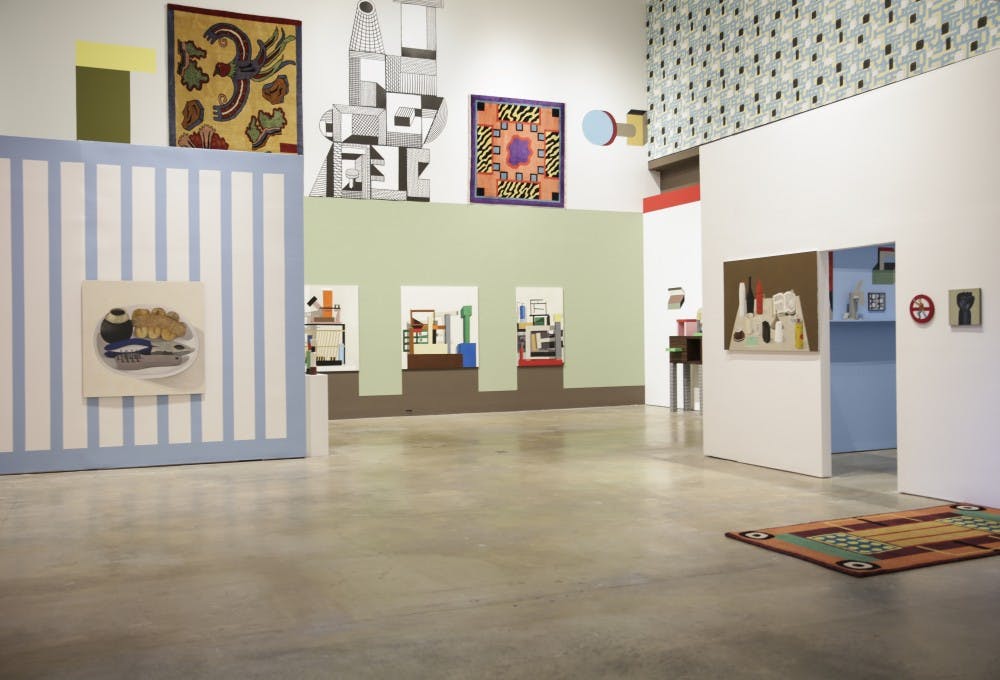On a public tour of the ICA fall show, Nathalie Du Pasquier’s “Big Objects Not Always Silent,” curator Alex Klein tells the crowd about what happened when Du Pasquier noticed a tiny red fire alarm, fixed on the exhibition’s entry wall where a few of her smaller pieces would hang.
“How about we paint the whole wall red?”
Some visual artists have to see the space to make the show—need to work in flux—taking an intuitive, reflective approach to form, color, light, surface, positioning, and dimensionality. Du Pasquier’s installation of “Big Objects Not Always Silent,” a retrospective, can be described as an architectural iteration of her unique sensitivity to objects in space, or space in flatness. As in her compositions, there’s a keen awareness that the show could not have been pieced together any other way.
But if you want answers, look to the art and not the artist. Notwithstanding Du Pasquier’s remarkable intentionality, Klein reminisces on how the artist refuses to over–intellectualize. She might explain that a surface or object appears bright because she relocated her studio—the new space simply offered more light.
Nathalie Du Pasquier was born in France and lives in Milan. She traveled the world and worked for many years as a designer before focusing her time on painting. Du Pasquier founded the influential post–modernist design and architecture collective, Memphis, under the leadership of Ettore Sottsass. While there, she designed textiles, carpets, plastic laminates, and some furniture and objects. Her fusion of design and fine art is one important strength of her work, and it has made for quite a playful and dynamic retrospective. What is it called when we can view a gorgeous geometric rug, hung 15 feet up a wall among several giant oil paintings, while standing ourselves atop another of Du Pasquier’s rugs placed emphatically on the gallery floor? Joy!

Source: Gina Alm
All of Du Pasquier’s painting, sculpture, drawing, installation, and design–based pieces are engaged in a (silent?) dialogue. We survey and converge on what could be the tiniest of forms—a four inch rectangle, perhaps, flat yet so full of life we’re convinced that Du Pasquier is presenting us with collage after collage of a series of worlds that actually do exist.
Nathalie Du Pasquier could be described as an archivist’s nightmare, constantly recycling, reworking, and reconstructing her artwork. Though her disinterest in explanation doesn’t make a curator’s task easy either, Alex Klein remarks that bringing this show to the ICA (first conceived and presented by curator Luca Lo Pinto at Kunsthalle Wein in Austria last fall), has been a true delight.
"Big Objects Not Always Silent" will be on view at the ICA Philadelphia, now through Dec. 23. The ICA is free for all.







